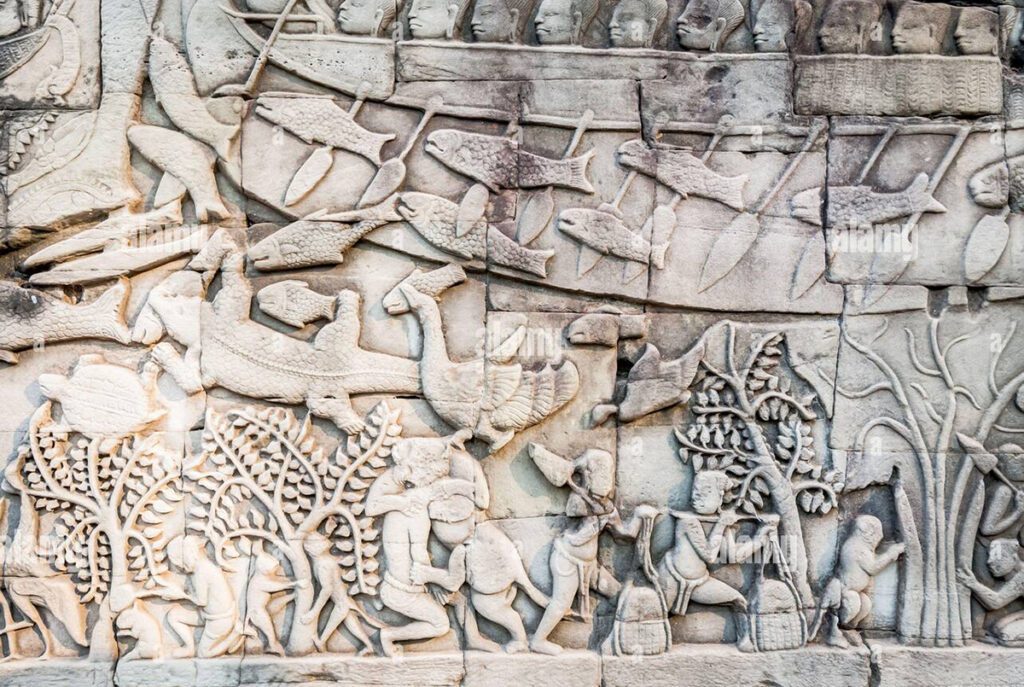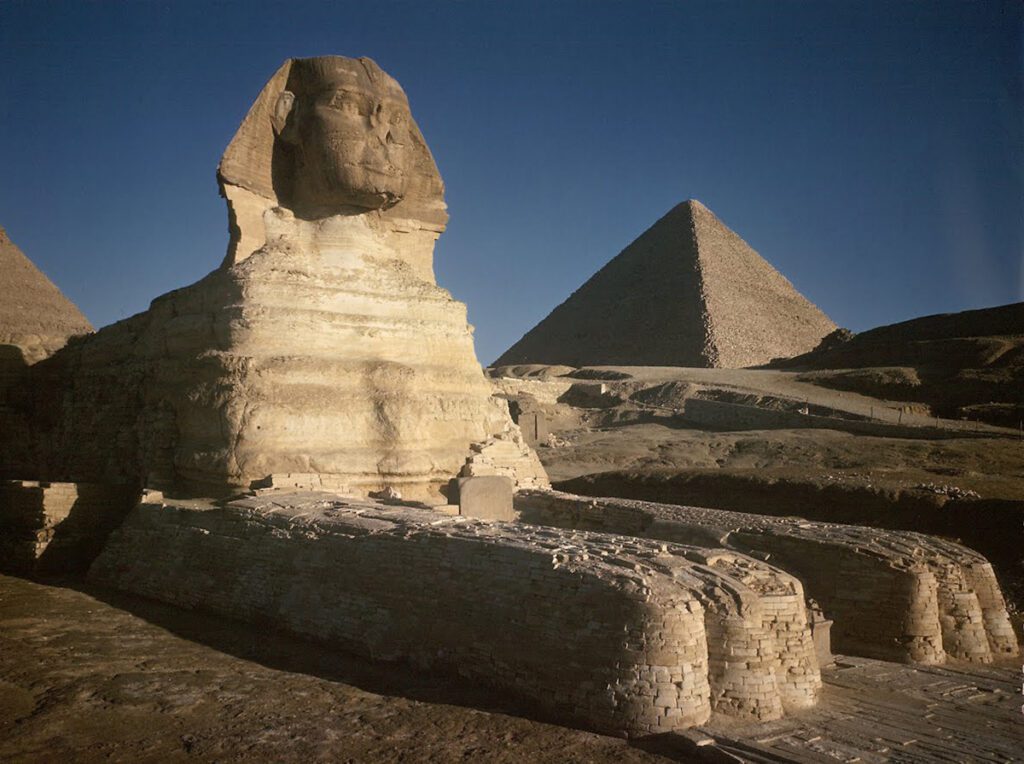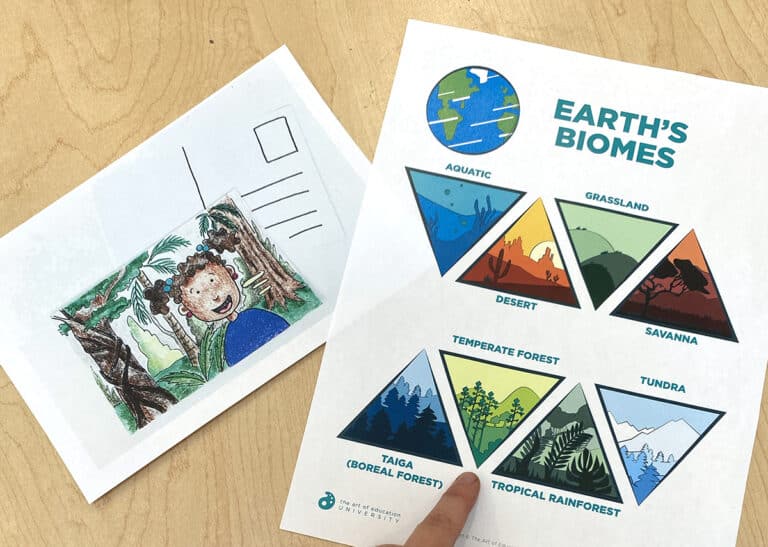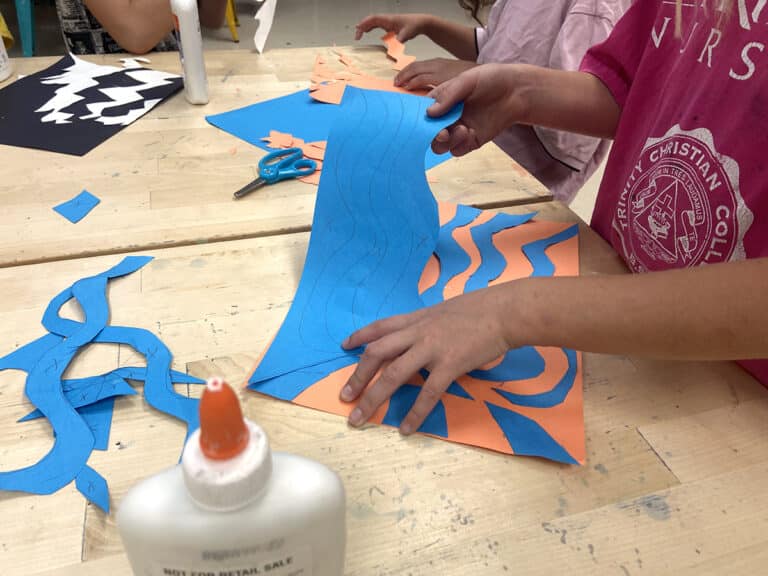The past shapes today—how we live, where we live, and what we eat have slowly changed over time. Even our modes of transportation evolved from feet to animals to buggies to gas-powered vehicles and now to electric ones. We live in a rapidly changing world and it’s important to stop, slow down, and marvel at how far we have come! Plus, it’s fascinating to notice the ways we have not changed despite technological innovations. The drive to create structures, sculptures, and depictions of our daily lives transcends time. It’s essential to look back and see the bigger picture to fully appreciate the architecture of the past and present.
Take a look at the three archaeological marvels below. Then, bring the practical art room applications to your students to spread appreciation and awareness of how far we’ve come!
1. Angkor Wat, Cambodia

Why should I teach this?
Angkor Wat is a 400-acre hand-constructed architectural wonder of the Khmer Empire in Cambodia and a few miles from the modern bustling city of Siem Reap. It’s primarily a religious temple consisting of thousands of buildings, surrounded by a large moat. The reliefs on the temple walls show a shift in religious practices from its origins as a Hindu temple to a Buddhist site. Today, Buddhist monks still practice religion in the temples. Souvenirs and food stands are available nearby which boosts the commerce economy. These ruins give visitors a glimpse into religious traditions, an engineered water system, and architecture inspired by India. Because many ruins still lay undiscovered in the dense Cambodian jungle, Angkor Wat feels like a real-life treasure hunt!
How do I teach this?
Introduce this marvel during a relief sculpture unit and show the bas-reliefs in the temple. Compare and contrast them with other bas-relief sculptures such as the Arc de Triomphe in Paris and the Parthenon in Greece. Then, students create their own relief sculpture with cardboard. Check out the Sculpting with Cardboard or Integrating Sculpture Collections in FLEX Curriculum for several low-relief ideas.

2. The Great Wall, China

Why should I teach this?
The Great Wall of China showcases perseverance and how to use architecture as a massive military defense. It is the largest man-made build in the world, measuring over 12,427 feet long. Starting in 220 B.C., China’s emperors spent 2,000 years to build it to protect their territories. Because it took so long to construct, many styles and materials are present. This landmark also includes horse tracks, watch towers, shelters, fortresses, and passes.
How do I teach this?
- Compare and contrast the Wall with other walls in history such as the Berlin Wall, the West Bank Barrier, the Theodosian Walls of Constantinople, the Walls of Ston, Hadrian’s Wall, or Zimbabwe’s Great Enclosure. Discuss location, time period, materials, purpose, building process, and style.
- Share the legend of Lady Mengjiang to captivate students. Lady Mengjiang’s husband left to build the Great Wall and he never returned. She went to bring him warm winter clothes, but by the time the news reached her, he already passed away. The story says she wept so bitterly that part of the wall collapsed.
- Facilitate an architectural challenge. Save up thin cardboard boxes such as cereal and tissue boxes. Each student designs a section of a “bridge” or “wall” to form one long structure as a class. Students use scissors and cardboard attachment methods to construct their sections and add details such as handrails, brick designs, and tunnels.

3. Pyramids of Giza, Egypt

Why should I teach this?
These massive monuments are relics of the ancient Egyptian world and are almost 4,500 years old. Each features almost impossible geometric perfection. Three main pyramids are on the Giza plateau and took 300 years to construct. Each pyramid’s design and artifacts give an anthropological view into the lives of Egyptians at the time.
Just like the other two architectural marvels above, no one quite knows the mechanics behind the construction. Workers carried blocks, probably limestone, from the quarry to the construction sites without the aid of heavy machinery. What a feat! Plus, its craftsmanship and engineering reign supreme. The Great Pyramid was the tallest structure in the world for thousands of years, was one of the Seven Wonders of the Ancient World, and is the only Wonder standing today.
How do I teach this?
- Tell students to add these pyramids to their future bucket lists! Once in Egypt, it’s inexpensive for an adult to book a ticket to visit the Great Pyramids. Alternatively, students can visit with a virtual tour.
- Check out the Exploring Architecture or 3D Engineering Collections in FLEX Curriculum for lesson ideas with step-by-step instructions and student-facing resources.

Ancient architecture holds incredible history, mysteries, and sheer creative feats. Acknowledging the past helps us understand how far we have come as artists, innovators, and human beings. From Cambodia’s overgrown jungle temples to China’s lengthy stone wall and Egypt’s geometric stone pyramids, each landmark tells a rich story about the people of the time. Each site features diverse architectural styles. Each structure allows present and future generations to see what human hands are capable of. Looking to the past is a great inspiration so get creative in the classroom by bringing ancient architecture to your students now!
What architectural wonder do you love to share with your students?
How does incorporating architecture and archaeology benefit your students?
Magazine articles and podcasts are opinions of professional education contributors and do not necessarily represent the position of the Art of Education University (AOEU) or its academic offerings. Contributors use terms in the way they are most often talked about in the scope of their educational experiences.





